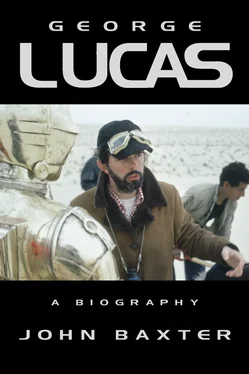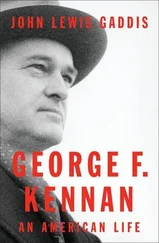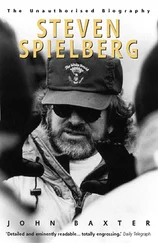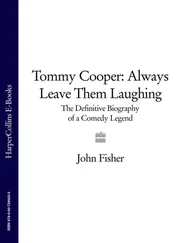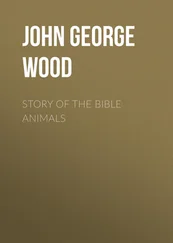1 ...8 9 10 12 13 14 ...33 At sixteen, the gap between Lucas and his father seemed an abyss, but over the next twenty years George would become more and more recognizable as the son of a small-town Methodist businessman. ‘It’s sort of ironic,’ he muses about his father, ‘because I swore when I was a kid I’d never do what he did. At eighteen, we had this big break, when he wanted me to go into the business and I refused, and I told him, “There are two things I know for sure. One is that I will end up doing something with cars … and two, that I will never be president of a company.” I guess I got outwitted.’
Almost as soon as he won his license, George started getting traffic tickets. For the police, hot-rodders were anathema, and trapping them something between a sacred calling and a sport. Most of the local cops were young themselves, had grown up with the low-riders and hot-rodders, and envied their lawless opposite numbers. In More American Graffiti , Lucas brings back Bob Falfa, the rodder defeated by John Milner in the first film, as a California Highway Patrol cop on a motorcycle, booking the people who used to be his rivals. Called into traffic court, Lucas went with his father, who insisted his son get a haircut and wear a suit – the only time anyone ever saw George in collar and tie. Business clothing became the symbol of everything his generation despised: functionaries of all sorts came to be dismissively called ‘suits.’
The car culture thrust Lucas into a new, pragmatic world. All that counted were your skills, your capacity for action. Life wasn’t for reflection: it was for use, like the landscape around Modesto. ‘George has this idea about a used universe,’ says sound engineer Randy Thom. ‘He wanted things in his films to look like they’ve been worn down, rusted, knocked about. He didn’t want things to look brand new.’
It’s not hard to trace this vision to those days in 1960 and 1961 when Lucas kicked around the world of Northern Californian car racing. Plenty of fairgrounds had installed raceways. They staged demolition derbies on weekends, preceded by auto-cross – racing sports and stock cars against the clock. Like hot-rodding, auto-cross was a first step into the pro world of the National Association for Stock Car Racing (NASCAR), or Class C sports car competition. Detroit was already taking an interest in what happened at circuits in Stockton, Goleta, Willow Springs, Cotati, and Laguna Seca, just outside Monterey. New tires, new fuels, new engines could be tested to destruction by these rural daredevils, some of whom might make it to the sponsored big time, as had Junior Johnson and Freddie Lorenzen, backed by Chevrolet, Ford, Firestone, and Goodyear. Lucas delved into this world in More American Graffiti , where John Milner, having made his reputation as a hot-rodder, tries to break into big-time drag racing, with its professional teams sponsored by big automotive companies.
The Bianchina was a toy in the high-powered world of auto-cross, but even if Lucas had had a better car, Californian law forbade anyone to race until they were twenty-one. Always the team player, he attached himself to a winner and insinuated himself into his group until he made himself indispensable, much as he would do with Francis Coppola a few years later.
The winner in this case was Allen Grant, a coming sports-car driver whom Lucas met at Laguna Seca. Four years older than Lucas, he had graduated from Downey in 1958 with grades almost as poor as Lucas’s. Now he drove a dazzling Ford Mustang Cobra and was attracting attention from big sponsors. Good-looking, well connected, successful with women, Grant had already embarked on a business career which would make him, for a while anyway, one of the richest entrepreneurs in Northern California.
Grant offered a potent role model. Lucas became his mechanic, and a conveniently light co-driver. He also joined the Ecurie AWOL Sports Car Competition Club, and began editing its newsletter, BS . His drawings of sports cars and caricatures of drivers appeared in BS , and he sold or gave the originals to his friends, including Grant. Through Grant, Lucas began to sense that another life existed outside Modesto; but he wasn’t sure how to exploit this knowledge. He was well into his last year at high school, but didn’t delude himself that his grades would get him into junior college, let alone either of California’s two main universities, the University of California at Los Angeles (UCLA), with its main campus in Westwood, a luxury suburb of Los Angeles, or the University of Southern California (USC), situated in a funkier corner of the city, on the edge of the old downtown area. UCLA, the official state college, required no tuition fees, but its academic requirements were high. USC had lower requirements, but demanded fees.
Lucas and John Plummer pored over college prospectuses. ‘We wanted a school,’ says Plummer, ‘that didn’t have a lot of requirements in math or anything else, but that would let us go into more of the creative side.’ If they didn’t find one, they had more or less decided to go to Europe together, though with Dorothy Lucas in hospital again and three other children to put through school, George Sr showed no inclination to fund such a trip. Nor could he countenance his son going to study in Los Angeles, which he ridiculed as ‘Sin City.’
George persisted. Of the two universities, USC looked the more promising. It even offered a film course, one of the first in the country. ‘In those days, film school wasn’t like it is now,’ says Willard Huyck, the screenwriter who would graduate from USC and, with his wife and writing partner Gloria Katz, script American Graffiti . ‘Nobody knew about it, and they sort of stood outside the door of film school and grabbed you as you walked by, and asked if you’d like to become a film major.’
The USC course included animation and photography, and Lucas wondered if he could bluff his way in with a portfolio of drawings and his skill with a 35mm camera. First, however, he had to graduate from Downey – and with a D average, that was anything but assured. School ‘commencement,’ the end of the academic year, was on a Friday in the middle of June. As the day approached, he still had three ‘incompletes,’ and unless he delivered the papers necessary to finish the coursework, he could fail to graduate.
These things were on his mind when, on a hot Tuesday, 12 June 1962, he drove the Bianchina out of the gate of the walnut ranch and headed for town. His mother was resting, having just returned from another spell in hospital, weak and emaciated: she and her son now both weighed the same, eighty pounds. He’d tried to persuade his sister Wendy to come to the library with him, as she often had before, to help with his spelling and sentence structure, but she preferred to stay by the pool and keep an eye on her mother.
George spent a few hours at the library, but did little work. He would always hate writing, and on a hot day like this, he hated it more than usual. At around 4.30 p.m. he left, and roared the little Fiat back along the road home. He arrived outside his home at 4.50, and swung the car to the left to enter the dirt track leading to the house. He never saw the Chevrolet Impala driven by seventeen-year-old Frank Ferreira, a classmate from Downey, coming up fast behind him. It tried to overtake just as Lucas swung across the road. The heavier Chevy slammed into the side of the Fiat, level with the driver’s seat, and sent it bounding like a toy. On the third roll, Lucas’s seatbelt snapped and he was thrown clear, flying high into the air before landing with stunning force on his chest and stomach. The car bounced twice more, showering dust and pebbles of safety glass, crashed into a walnut tree at sixty miles an hour, and stuck there, wrapped around the trunk. So great was the impact that the tree, roots and all, shifted two feet.
Читать дальше
